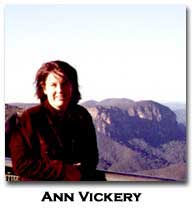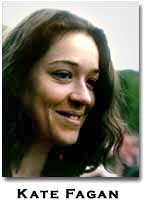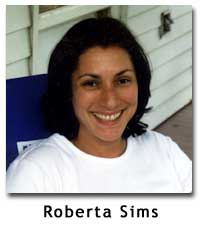
editor’s notes on How2/6
by Ann Vickery
HOW2 has always been a site of exchange—a place where the written is read, the news is passed on, and thoughts discussed. In issue 6, this concept is both celebrated and theorized. The new writing section, for instance, features a range of collaborations. While Rena Rosenwasser presents a history of Kelsey St. Press’s collaboration series, Frances Presley considers what it might mean to undertake a “collaboration in the feminine.” How are processes of identification and individuation played out? What happens to notions of authorship and authority? Such questions are complicated when collaboration shifts across mediums, where it is perhaps best seen as a process of composition. In addition to the collaborations featured in the new writing section, we feature “The X, Y, Z of It” in the multimedia section. This ambitious collaboration involves written text, pre-existing audio recordings, and artwork. Brian Kim Stefans also makes use of new technologies to draw the reader into a visual and textual interaction with his interview with Kim Rosenfield.
Collaboration prefigures the necessity of dialogue. It might perhaps been seen as a kind of micro-community. Our other new writing section, “Writing from Vancouver,” considers work being produced by a regional constellation of poets. Whereas the Australian writing feature in our last issue was organized around a thematics of passion, this issue considers writing through location. What are the concerns emerging out of a particular city if viewed not as an island but as a permeable, rhizomatic site where influences come into it, cross between it and generate out from it? How might such cultural traffic be reflected in poetry? Considering the complexity of the particular (and its resistance to the pull of globalization), forum coordinators, Kornelia Freitag and Brian Reed, ask “[I]sn’t one of the most fascinating aspects of poetry its linguistic and cultural specificity, its untranslatability?” At the same time, they want to consider the prospect of a transnational community emerging in women’s experimental verse. What advantages might such a community have? How would it operate and how might it be theorized?
Strategies of exchange, polylingualism, and translation are particularly pertinent in such debates. With issue 6, our translation section returns, extending the possibilities of international exchange. Louis Armand and Clare Wallace present their translations against the original texts of French poet, Véronique Vassiliou. Sawako Nakayasu provides a lengthy translator’s note for her exciting translations of Ito Hiromi’s writing. Ito’s work provides a startling insight and commentary on contemporary Japanese culture. Through her translations, Nakayasu introduces many HOW2 readers to this work and to consider at times, certain resonances with Western culture, such as dominant attitudes surrounding femininity and motherhood. There are resonances too with Rose Alcalá’s translations of Lourdes Vázquez’s Latin American work, both Ito and Vázquez using the cat as a trope of the feminine in their representation of desire and loss.
Our “Readings” for issue 6 have been divided into two sections: “The Poetics of Encounter” and “Robin Hyde and New Zealand Modernism.” “The Poetics of Encounter” contains a number of actual encounters: Dell Olsen interviews Joan Retallack, Norma Cole and Susan Gevirtz read one another’s work; and Kimberly Lamm, Kristin Prevallet and Melissa Buzzeo have a conversation about Lyn Hejinian’s The Language of Inquiry. But there are also a number of other papers that consider what could be called a “poetic encounter,” what Lamm suggests might be “an attentive testing of how literature illuminates and complicates the ways language structures one’s encounter with the world.” A poetic encounter considers the ethics arising from the risky crossing between language and experience.
The other “Readings” section considers encounters with a past figure, New Zealand modernist, Robin Hyde. In a special co-publication with the New Zealand Electronic Poetry Center, we feature both published and unpublished examples of Hyde’s poetry, a selection of previously unpublished correspondence, and an example of her journalism. Both Michele Leggott and Lisa Docherty consider how the archive shapes our engagement with Hyde. Other contributors consider the changing reception of Hyde’s work as it was rejected or marginalized through the nationalising projects of the early and mid-twentieth century, embraced by second wave feminism, and now reconsidered through a historicist or cultural lens. Through taking Hyde as a case study, we might also begin to understand the role of gender in constructions of New Zealand modernism. We are particularly pleased to be able to present our feature on Hyde as part of a special co-publication with the New Zealand Electronic Poetry Center. Developed by Leggott and Brian Flaherty, the NZEPC began its fully fledged existence in July 2001. HOW2 readers will be able to link to the NZEPC site to read a further, complementary range of Hyde’s writings and critical responses.
While the section on Robin Hyde foregrounds issues of erasure, marginality, and recovery, the in-conference section also deals with the politics of presence and the present. These essays were first presented at the Oxford Brookes colloquium on The Politics of Presence: Re-reading the Writing Subject in “Live” and Electronic Performance, Theatre and Film Poetry in April this year. As Romana Huk points out, “The necessity of rethinking identity politics and their impact on the social sphere according to newly located and temporalized rather than “generic” models of difference makes the collocation of performance discourse (with its re-placement of the female body) and those of gender politicking seem exhilarating and timely. This is particularly so given the range of new media and modes in which to experiment with what Caroline Bergvall refers to as the context-specific and continually moving quantity of ‘presentness’ rather than ‘presence.’”
In the work/book section, Patricia Dienstfrey explores presence in writing in Love and Illustration, particularly the virtus (Latin for supernatural or divine power) of the text at the level of letters, syllables and phonemes. She further considers the relationships between the text and the phenomenal world. Our alerts includes reviews both of the community (the Australian anthology, Calyx) and of collaboration (Jo and Drew Milne’s Pianola). They also cover reviews of challenging new work and long awaited collections.
Our title “Ex-change” also foregrounds the coming of change. In late June, I took up a postdoctoral fellowship at Yale and Temple for a year. Our managing editor, Kate Fagan, did an incredible job of holding HOW2 together during the surrounding months and of ensuring that the deadlines of various sections were met. Given our experience of working closely together on HOW2, Kate and I are confident that the distance between us will not affect the running of HOW2. Thanks also to our webmaster, Roberta Sims, and to the coordinators and contributors who helped make this transition so much easier.
The second change was far greater: the events of September 11. This issue was planned well before then but in production when the terrorist attacks in the United States occurred. A number of HOW2 coordinators, contributors, and members of the editorial advisory board were directly affected. The next few weeks were spent renewing contact with one another and drawing together the HOW2 community. A spontaneous discussion arose between the EA Board, some of which has been excerpted and now appears in our “Postcards” section. While some of us wondered how to write after September 11, others reconsidered the role of poetry in public discourse. Thinking about writing’s relationship to trauma, mourning, and witness is particularly pressing. At the same time, it is worth remembering the role of writing as a medium of exchange and its value in approaching the other. Our next issue will be a special issue addressing innovative women’s writing after September 11. Elisabeth Frost and Linda Kinnahan will help in organizing this issue. There will still be a number of individual pieces and feature sections that do not necessarily touch on issues surrounding the September 11 events and their aftermath. We have a section on Lorine Niedecker that has long been planned. But we are hopeful that the issue as a whole will be a resonant and valuable one.
Please consult our masthead for the contact addresses for our editors and coordinators. Thanks again to Roberta Sims who has seen this issue through while updating Bucknell’s websites post-September 11.
HOW2

|
Editor
/Publisher:
Ann Vickery |

|
Managing Editor:
Kate Fagan |

|
Webmaster:
Roberta L. Sims |
HOW2
Internet Address (Bookmark it!):
http://www.departments.bucknell.edu/stadler_center/how2
Editorial correspondence may be e-mailed to:
avickery@astro.temple.edu
or kfag6311@mail.usyd.edu.au
Review
copies of recent books may be sent to:
Kate Fagan
26 Iredale street
Newtown, NSW 2042
Australia
go to this issue's table of contents